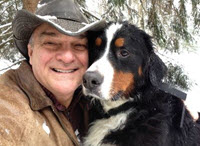Call (330) 633-7141
Conscious Sedation Dentistry: Dental Anxiety and its Management
All too frequently, a planned visit to the dentist is looked on with a degree of dread and foreboding. This is referred to as dental anxiety.
Dental anxiety is not unusual, for it is quite natural for a person to be uncomfortable when placed in a position in which they feel that they are vulnerable, as occurs in the dental chair.
It is important that a patient tell the doctor if they have any dental anxiety related to their planned dental treatment. Keeping their fears hidden can only lead to a much more unpleasant experience for the patient and, in more extreme circumstances, may even increase the likelihood of certain emergencies occurring, such as fainting.
Once the sedation dentist is aware of the patient's dental anxiety and fears, there are many ways in which they may be addressed. In some cases, simply discussing the planned procedure is all that is necessary to alleviate the patient's dental anxiety.
When this is not enough, other highly effective and safe sedation techniques can be used to alleviate dental anxiety. If the technique involves the administration of a drug, it is termed conscious sedation dentistry.
The most readily available routes of conscious sedation are: oral, inhalation, intravenous and intramuscular. For extremely fearful dental patients, general anesthesia may be required.
Oral Conscious Sedation Dentistry
Many dentists will prescribe a sedative drug to be taken by mouth prior to the planned treatment. If the individual has an even greater degree of dental anxiety, the doctor may prescribe an oral conscious sedative to be taken at home one hour prior to going to sleep on the evening before the appointment.
If the drug is administered at home, it is IMPERATIVE that the patient NOT DRIVE A CAR to the appointment. Patients receiving oral conscious sedation are not permitted to drive a car or operate a motor vehicle for 24 hours following their appointment.
Commonly administered oral conscious sedatives include: Valium, Halcion, Dalmane, and Versed. Oral conscious sedation dentistry is most effective in the management of milder degrees of dental fear.
Inhalation Conscious Sedation Dentistry
The use of inhalation conscious sedation (nitrous oxide and oxygen) has been a mainstay of sedation techniques in dentistry for generations and still represents the most frequently employed technique. Commonly known as laughing gas, nitrous oxide-oxygen is used by more than 35% of all U.S. dentists.
An advantage of this technique of inhalation conscious sedation is that most people receiving it recover promptly and may be permitted to leave the dental office unescorted and resume normal activities immediately.
Inhalation conscious sedation is most effective with mild to moderate degrees of dental anxiety.
Intravenous Conscious Sedation Dentistry
Though not as readily available as other conscious sedation techniques, intravenous (IV) conscious sedation is a safe and highly effective technique for management of moderate to more severe levels of dental anxiety.
Sedation dentists who employ IV conscious sedation have received specialized advanced training and certification by their state Board of Dental Examiners.
Drugs administered intravenously are more effective than the same drugs taken orally. A major benefit of some of these IV drugs is amnesia.
The patient will have no memory of some, or even all, of the dental treatment. This will lead the patient to think they were asleep during the treatment when, in reality, they were awake, but comfortable, at all times.
During the procedure, monitoring devices will be attached to the patient. These devices monitor the effectiveness of one's breathing (pulse oximeter), blood pressure and heart rate, increasing the safety of the procedure.
Patients receiving IV conscious sedation are not permitted to leave the dental office unescorted at the conclusion of the procedure.
Intramuscular Conscious Sedation Dentistry
Less commonly employed for adult patients, intramuscular (IM) conscious sedation is a relatively effective technique for management of moderate levels of dental anxiety and fear.
IM conscious sedation is more often employed in the management of fearful children. Sedative drugs are injected into the muscle of the upper arm or the thigh, producing sedation in approximately 20 to 30 minutes.
Dentists using IM conscious sedation have received specialized advanced training and certification by their state Board of Dental Examiners and will employ the same monitors described in the IV conscious sedation section.
General Anesthesia
Though the techniques of conscious sedation described above effectively manage more than 90% of all fearful dental patients, some may require general anesthesia in order to relieve their dental anxiety during their dental treatment.
When general anesthesia is used, the sedation dentist will employ a person who is trained and certified in general anesthesia to manage the patient while the dentist carries out the dental treatment.
This person will be a dentist anesthesiologist, a medical anesthesiologist, or, in some cases, a nurse anesthetist, whose sole responsibility is to ensure the safety of the sleeping (unconscious) patient while the dentistry is being done.
Sleep dentists using general anesthesia have received a minimum of two years of specialized advanced training and have been certified by their state Board of Dental Examiners. Monitors will be employed to help ensure the safety of the procedure.
Not all dentists employ conscious sedation techniques to relieve dental anxiety. It is important for patients to voice concerns and dental fears with their dentist during their first visit to the office.
The dentist will seek to work out a treatment plan that will best accommodate the patients needs. In some situations it may be necessary to refer a patient to a doctor who has these techniques available.
By Stanley F. Malamed, DDS
Call for an appointment:
(330) 633-7141
Make an Appointment
Take good care of your smile. Your dental care can be done while you are comfortably sedated.
Free Photo Session by Dr. Joe in his office studio for new brides completing a smile makeover with Porcelain Veneers
Promotion details go here.






